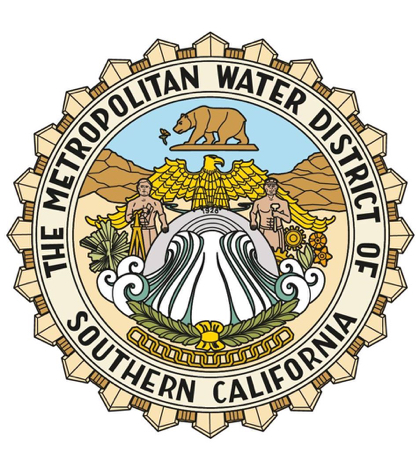Metropolitan Water District (MWD), the Southland’s largest water supplier, has painted a more optimistic picture of the area’s water status at a press conference held at their downtown Los Angeles office on Monday. Though acknowledging California’s drought is still in existence, especially in Southern California, MWD officials claim increases in water reserves, as well as the region’s strong commitment to water efficiency and conservation, have positioned the Metropolitan Water District to meet Southern California’s imported water needs.
But even with MWD’s good news, Randy Record, MWD’s board chairman said, “The reality is that California is still in a drought. We’re just not in a state of emergency. Heading into 2017, we’re hoping to build on the supply momentum created by Southern California’s ongoing water-saving efforts and improved storage conditions this year.”
Mark Cowin, director of the California Department of Water Resources, who was present at Monday’s news briefing said, “The increased rain and snow the state received up north this year provided some relief from drought. But without more storms this winter, the state will quickly be facing the same severe conditions we saw in 2014 and 2015.” He also cautioned that State Water Project reservoir storage is below historical averages heading into 2017.
But Metropolitan General Manager Jeffrey Kightlinger, who joined Record and Cowin in providing the water status update, claimed that MWD is better positioned to manage the drought due to increases in the region’s water reserves in reservoirs and local groundwater basins.
MWD has received a 60 percent allocation from the State Water Project (SWP), more than the last three years combined. The SWP typically provides about a third of Southern California’s water. Kightlinger also credited successful ongoing regional conservation efforts for easing down water demands.
“The increased state supplies and local water-saving is allowing us to start rebuilding our storage by up to 500,000 acre-feet by the end of the year. That’s the first increase to regional reserves in four years,” Kightlinger said.
However, Kightlinger cautioned that uncertainties remain regarding the future of the Southland’s supplies from the Colorado River and Northern California, the district’s two imported water sources. After 16 drought years, storage in the Colorado River system is at less than 40 percent, increasing the risk of shortage conditions in coming years. The reliability of supplies delivered from Northern California also is at risk due to pumping restrictions and deteriorating environmental conditions in the Sacramento-San Joaquin Delta and an aging state water system.
“Those pumping restrictions could cost Southern California of up to a third of our State Water Project supplies in average years unless the system is updated,” Record said. “You can just look at Diamond Valley Lake this year to see the impacts. Chances are we would have been able to fill the lake had it not been for pumping cutbacks.”
Metropolitan’s largest reservoir, Diamond Valley Lake, located in west Riverside County, is anticipated to be at 70 percent of capacity this year. MWD has also made about 200,000 acre-feet of water available to help replenish local groundwater basins significantly tapped during the drought. Statistic indicates that an acre-foot of water is nearly 326,000 gallons, about the amount used by two typical Southland households.
As for issues within the Sacramento-San Joaquin Delta, Metropolitan has long supported the planning effort by state and federal agencies, known as California WaterFix. The proposed plan would upgrade the water delivery system with new intakes in the northern Delta, along with state-of-the-art fish screens and twin tunnel pipelines to more safely and effectively convey water to the existing California Aqueduct system.
Record continued his comments saying, “Climate change means we are going to have longer droughts and hotter weather. The system needs to be modernized to take better advantage of water when it’s available. Under the existing system, the Southland’s state project supplies are not reliable.”
In order to further their long-term water resource plans, Metropolitan will continue to emphasize lowering demands through conservation and developing new supplies through projects like water recycling. MWD will also offer nearly $140 million for conservation rebates. Its $2.2 million multi-language advertising program will continue to spread the conservation message with its H2Love campaign reminding Southern Californians to Love Water, Save Water and make conservation a way of life.
 California Water News Daily Your Source For Water News in California
California Water News Daily Your Source For Water News in California


